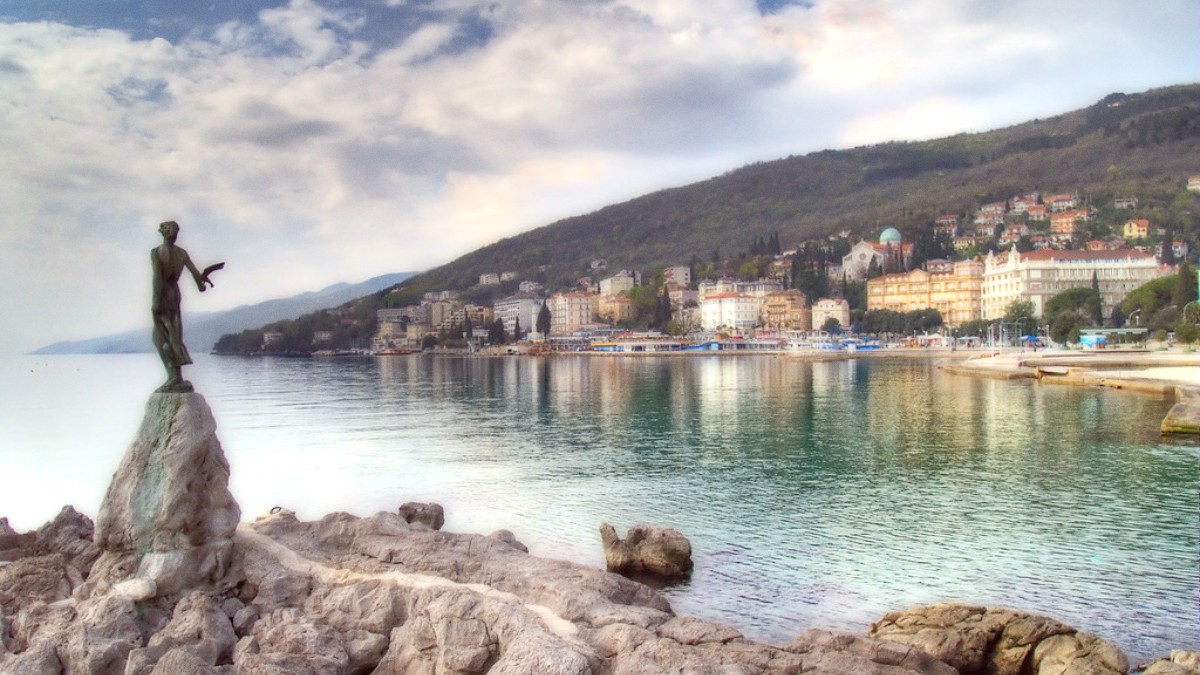
Gulf Of Kvarner, Croatia
Climate Patterns Throughout the Year
Temperature (Average Monthly High/Low):
January: 8°C/4°C (46°F/39°F)
February: 9°C/4°C (48°F/39°F)
March: 12°C/7°C (54°F/45°F)
April: 16°C/10°C (61°F/50°F)
May: 21°C/14°C (70°F/57°F)
June: 25°C/18°C (77°F/64°F)
July: 28°C/20°C (82°F/68°F)
August: 28°C/20°C (82°F/68°F)
September: 23°C/16°C (73°F/61°F)
October: 18°C/12°C (64°F/54°F)
November: 13°C/8°C (55°F/46°F)
December: 10°C/5°C (50°F/41°F)
Precipitation: Rainfall distributes throughout the year. Autumn months (September-November) typically see higher precipitation. Summers are generally drier but not entirely rain-free.
Humidity: Higher humidity levels are common during the summer months due to the coastal location. This makes warm days feel warmer.
The "Bora" (bura) is a strong, dry, cold northeasterly wind. It occurs, especially in winter, potentially impacting outdoor activities and occasionally transportation. This wind brings clear skies but can be quite strong.
The "Jugo" (scirocco) is a warm, humid southerly wind that often brings rain. These winds are part of the local climate and can influence your daily plans.
June - August
Sea temperatures ideal for swimming. All tourist facilities operate fully. Lively atmosphere with events.
Most crowded period. Accommodation and flight prices reach their peak. Book in advance.
April - May & Sept - Oct
Pleasant temperatures. Fewer crowds. Lower accommodation prices. Ideal for sightseeing and hiking.
Smaller establishments may be closed. Weather can be unpredictable, with more rain.
November - March
Minimal tourists, quiet experience. Accommodation prices significantly lower. Mild winter climate.
Many tourist businesses close. Sea is too cold for swimming. Higher chance of strong winds or prolonged rain.
Croatia became a full member of the Schengen Area on January 1, 2023. Once you enter Croatia, you can travel freely within other Schengen countries without further border checks. This simplifies multi-country European itineraries.
Schengen Visa (Type C): Citizens of certain non-EU countries need this visa for short stays (up to 90 days within any 180-day period) for tourism, business, or transit. Applications are typically submitted to the Croatian embassy or consulate in your country of residence. Start this process well in advance.
Visa-Exempt Nationalities: Citizens from many countries, including the United States, Canada, United Kingdom, Australia, New Zealand, and all EU member states, do not need a visa for stays up to 90 days within any 180-day period. This applies to tourism and short business trips.
Valid for at least three months beyond your departure from Schengen, issued within 10 years.
Evidence like recent bank statements or credit cards for your expenses.
Confirmed flight tickets or other arrangements showing departure.
Printed or digital copies of your hotel or lodging reservations.
A policy covering medical expenses, emergencies, and repatriation (min. €30,000 for visa applicants). SafetyWing and Insubuy are options for coverage.
Opatija caters to various budget levels, from backpackers to luxury travelers.
The official currency of Croatia is the Euro (€, EUR). This aligns with most of the European Union. ATMs are widely available and offer favorable exchange rates. Inform your bank of your travel plans. Major credit cards (Visa, Mastercard) are widely accepted. American Express may have limited acceptance. Carry some small Euro denominations for minor purchases or tips.
Your spending varies based on your choices. These are general daily cost estimates.
Your well-being is important when traveling. Opatija is a safe destination, but understanding health precautions enhances your trip.